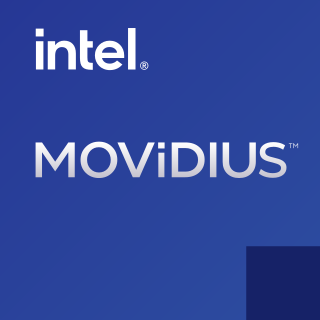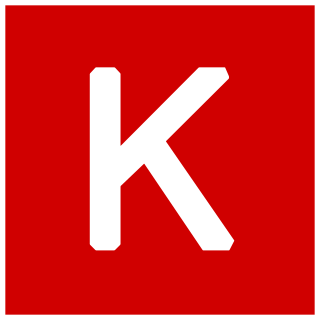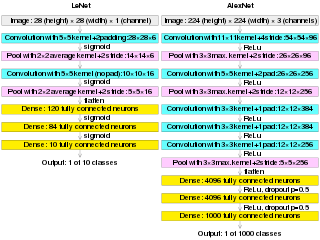Related Research Articles

Deep learning is the subset of machine learning methods based on artificial neural networks (ANNs) with representation learning. The adjective "deep" refers to the use of multiple layers in the network. Methods used can be either supervised, semi-supervised or unsupervised.
Convolutional neural network (CNN) is a regularized type of feed-forward neural network that learns feature engineering by itself via filters optimization. Vanishing gradients and exploding gradients, seen during backpropagation in earlier neural networks, are prevented by using regularized weights over fewer connections. For example, for each neuron in the fully-connected layer 10,000 weights would be required for processing an image sized 100 × 100 pixels. However, applying cascaded convolution kernels, only 25 neurons are required to process 5x5-sized tiles. Higher-layer features are extracted from wider context windows, compared to lower-layer features.

TensorFlow is a free and open-source software library for machine learning and artificial intelligence. It can be used across a range of tasks but has a particular focus on training and inference of deep neural networks.
The following table compares notable software frameworks, libraries and computer programs for deep learning.

Movidius is a company based in San Mateo, California, that designs low-power processor chips for computer vision. The company was acquired by Intel in September 2016.
A vision processing unit (VPU) is an emerging class of microprocessor; it is a specific type of AI accelerator, designed to accelerate machine vision tasks.

Tensor Processing Unit (TPU) is an AI accelerator application-specific integrated circuit (ASIC) developed by Google for neural network machine learning, using Google's own TensorFlow software. Google began using TPUs internally in 2015, and in 2018 made them available for third-party use, both as part of its cloud infrastructure and by offering a smaller version of the chip for sale.
An AI accelerator, deep learning processor, or neural processing unit is a class of specialized hardware accelerator or computer system designed to accelerate artificial intelligence and machine learning applications, including artificial neural networks and machine vision. Typical applications include algorithms for robotics, Internet of Things, and other data-intensive or sensor-driven tasks. They are often manycore designs and generally focus on low-precision arithmetic, novel dataflow architectures or in-memory computing capability. As of 2024, a typical AI integrated circuit chip contains tens of billions of MOSFET transistors.

Keras is an open-source library that provides a Python interface for artificial neural networks. Keras acts as an interface for the TensorFlow library.
Caffe is a deep learning framework, originally developed at University of California, Berkeley. It is open source, under a BSD license. It is written in C++, with a Python interface.
Matroid, Inc. is a computer vision company that offers a platform for creating computer vision models, called detectors, to search visual media for objects, persons, events, emotions, and actions. Matroid provides real-time notifications once the object of interest has been detected, as well as the ability to search past events.
The CIFAR-10 dataset is a collection of images that are commonly used to train machine learning and computer vision algorithms. It is one of the most widely used datasets for machine learning research. The CIFAR-10 dataset contains 60,000 32x32 color images in 10 different classes. The 10 different classes represent airplanes, cars, birds, cats, deer, dogs, frogs, horses, ships, and trucks. There are 6,000 images of each class.
Deep image prior is a type of convolutional neural network used to enhance a given image with no prior training data other than the image itself. A neural network is randomly initialized and used as prior to solve inverse problems such as noise reduction, super-resolution, and inpainting. Image statistics are captured by the structure of a convolutional image generator rather than by any previously learned capabilities.
Neural architecture search (NAS) is a technique for automating the design of artificial neural networks (ANN), a widely used model in the field of machine learning. NAS has been used to design networks that are on par or outperform hand-designed architectures. Methods for NAS can be categorized according to the search space, search strategy and performance estimation strategy used:
In computer vision, SqueezeNet is the name of a deep neural network for image classification that was released in 2016. SqueezeNet was developed by researchers at DeepScale, University of California, Berkeley, and Stanford University. In designing SqueezeNet, the authors' goal was to create a smaller neural network with fewer parameters while achieving competitive accuracy.
OpenVINO is an open-source software toolkit for optimizing and deploying deep learning models. It enables programmers to develop scalable and efficient AI solutions with relatively few lines of code. The supported models come from several existing frameworks and support different categories, including large language models, computer vision, and generative AI.

A layer in a deep learning model is a structure or network topology in the model's architecture, which takes information from the previous layers and then passes it to the next layer.
A vision transformer (ViT) is a transformer designed for computer vision. A ViT breaks down an input image into a series of patches, serialises each patch into a vector, and maps it to a smaller dimension with a single matrix multiplication. These vector embeddings are then processed by a transformer encoder as if they were token embeddings.
The Fashion MNIST dataset is a large freely available database of fashion images that is commonly used for training and testing various machine learning systems. Fashion-MNIST was intended to serve as a replacement for the original MNIST database for benchmarking machine learning algorithms, as it shares the same image size, data format and the structure of training and testing splits.
Tensor informally refers in machine learning to two different concepts that organize and represent data. Data may be organized in a multidimensional array (M-way array) that is informally referred to as a "data tensor"; however in the strict mathematical sense, a tensor is a multilinear mapping over a set of domain vector spaces to a range vector space. Observations, such as images, movies, volumes, sounds, and relationships among words and concepts, stored in an M-way array ("data tensor") may be analyzed either by artificial neural networks or tensor methods.
References
- 1 2 3 Szegedy, Christian (2015). "Going deeper with convolutions" (PDF). CVPR2015.
- ↑ Tang (May 2018). Intelligent Mobile Projects with TensorFlow. Packt Publishing. pp. Chapter 2. ISBN 9781788834544.
- ↑ Karim and Zaccone (March 2018). Deep Learning with TensorFlow. Packt Publishing. pp. Chapter 4. ISBN 9781788831109.
- ↑ Milton-Barker, Adam. "Inception V3 Deep Convolutional Architecture For Classifying Acute Myeloid/Lymphoblastic Leukemia". intel.com. Intel. Retrieved 2 February 2019.